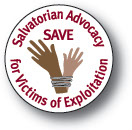It may be difficult to get a clear picture of what different forms of human trafficking look like in various regions of the world due to the fact that there are multiple different estimations of the prevalence of trafficking that are cited by a range of sources. In the year 2017, the International Labour Organization (ILO) developed the prevalence estimate that is currently considered to be the most trustworthy and acknowledged internationally. The Global Estimates of Modern Slavery give an estimate of the number of people who are held prisoner in various forms of modern slavery across the world. These forms of modern slavery include forced marriage and human trafficking. This study offers a rough estimate of the number of people who were victims of human trafficking on each given day in the year 2016, based on the data collected.
This information may be of immense aid to anti-trafficking organizations who are working to raise more notice to how pervasive of a problem human trafficking is all across the world. In this part of the report, we will examine what the data suggests and list the many different forms of human trafficking that are the most common.
There were 24.9 million people throughout the world who were victims of human trafficking in 2016, according to figures that were published by the International Labor Organization (ILO). Throughout the whole of this investigation, the term “forced labor” is used in order to provide an explanation for the several forms of exploitation that are sometimes referred to as “human trafficking” in the United States and other nations. The figure of 24.9 million takes into account victims of sex trafficking, which is also known as commercial sexual exploitation, as well as victims of forced labor exploitation, which can take place in the private sector or be imposed by the state. Victims of sex trafficking include people who have been exploited for sexual gain or financial gain.
The results of the study indicate that instances of human trafficking may be found in every region of the world. Even if it happens in every nation, the precise methods of human trafficking and coercion that are utilized might be highly different from one another depending on the cultural norms of the area as well as the details of the circumstance of each victim.
The global labor market is home to 20.1 million victims of human trafficking.
According to a study that was published in 2016 by the International Labor Organization (ILO), there were about 20.1 million victims of labor trafficking out of a total of 24.9 million victims of trafficking globally. Any person who has been forced to work or perform a service out of fear of being punished or hurt is considered to fall under this category. This includes those who have been enslaved. Depending on the locale, this might sometimes take the form of being forced to work in a factory, on a farm, or as a domestic servant. Other times, it can take the form of sexual exploitation. The number of male casualties was 9.2 million, while the number of female casualties was 10.9 million out of the total. Approximately 3.3 million of the total were children.
In 2016, it was estimated that there were 4.8 million persons throughout the world who were victims of sex trafficking and were forced to engage in commercial sexual exploitation. In this category, they include children who have been exploited for sexual gain by businesses, as well as people who have been forced to participate in sexual conduct as a part of the sex industry. One million children were among those participating in sex trafficking, and the remaining 3.8 million were adults. Ninety-nine point one percent of the victims in the globe were females.
It will be impossible for us to establish solutions that may permanently eradicate human trafficking if we do not have a comprehensive grasp of the nature of the problem that we are currently dealing with. This estimate is a key tool for analyzing trafficking around the world in order for us to be able to appropriately address the problem by using ways of prevention, protection, and punishment.
Read More

